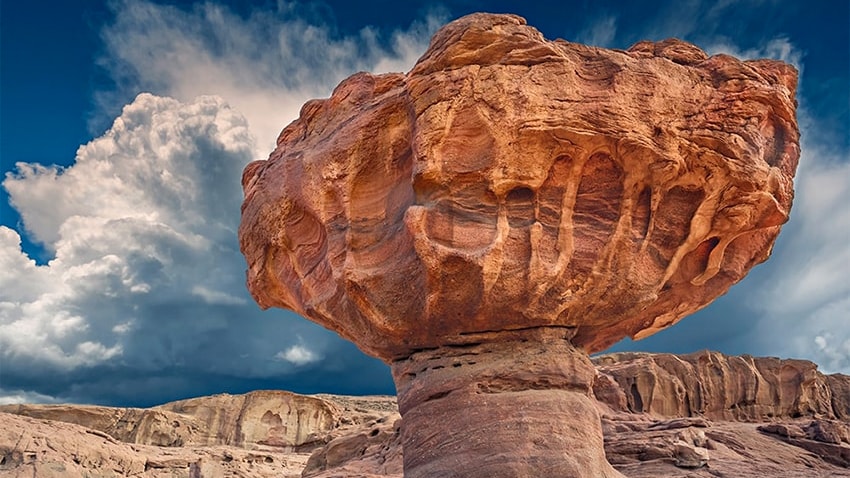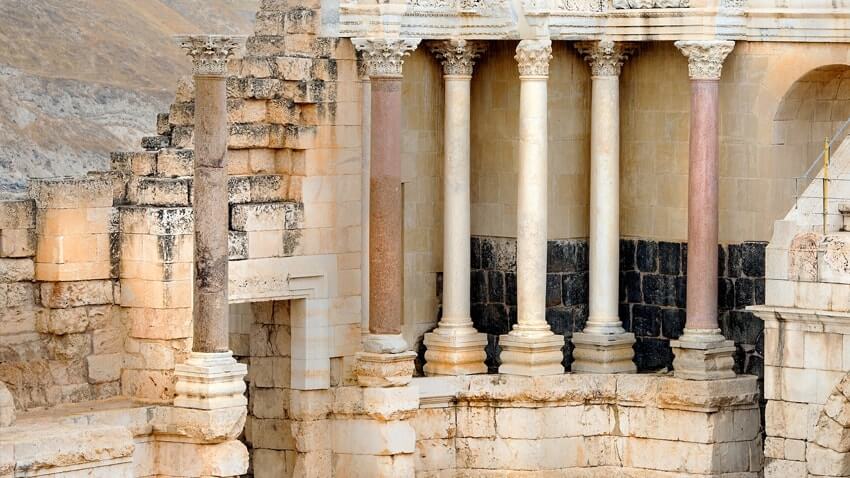Israel has many global achievements, but one that has history buffs glowing with particular pride is the inscription of six Israeli sites on the United Nations Educational, Scientific and Cultural Organization (UNESCO)’s World Heritage List.
The sites had to meet the world body's strict criteria to be included on the prestigious list of 830 sites around the world and Israel carefully protects and fosters them to ensure their preservation for future generations.

Massada
UNESCO honoured Masada as a symbol of Jewish cultural identity and of the human struggle for freedom from oppression. Masada’s construction by Herod the Great is also considered an extraordinary example of an early Roman villa, and the Roman siege works surrounding the plateau are the most complete in the world.
The White City of Tel Aviv
UNESCO also considers the White City of Tel Aviv to be outstanding – in synthesizing architectural trends of the Modern Movement and integrating them into local conditions. The buildings of the White City are one of Tel Aviv’s latest attractions, as the knots of visitors and locals who can be seen perusing them on Dizengoff, Rothschild and other streets attest.

The Old City of Acre/Akko
Acre (Akko) won its place thanks to the wonderfully preserved medieval town both above and below street level and its status as an outstanding example of an Ottoman walled city whose ramparts with marvellous views of the Mediterranean you can still walk on.
The Baha’i Holy Sites of Haifa and Akko
The UNESCO World Heritage Committee added the Baha'i Shrines and Gardens in Haifa and Acre to the World Heritage Sites in Israel. The resting places of the faith's founding fathers Baha'u'llah and the Bab, they represent the first World Heritage sites connected with a religious tradition born in modern times. The elaborate landscaped gardens and shrines are a site of annual pilgrimage, not only for the 5 million-strong Baha'i faithful, but also for hundreds of thousands of tourists from around the world.

The Incense Route – the Desert Cities of the Negev
The Incense Route – the Desert Cities of the Negev is the part of the 1,500-mile-long frankincense trade route from Arabia to the Mediterranean that crosses Israel's Negev. The route is from the Nabateans who built along it some two millennia ago. Mamshit, Avdat, Haluza and Shivta – all fascinating places to visit – carried not only precious spices, but also ideas and cultural exchange. The farming that developed along the way shows how a people could make a hostile desert environment bloom.
Biblical Tels – Megiddo, Hazor and Beersheba
UNESCO has determined that the Biblical Tels – Megiddo, Hazor and Beersheba, are also testimony to cultural exchanges along major ancient highways. Their intricate water systems which are the highlights of a visit to these sites, also show ingenuity and ancient community cooperation. The sites with their palaces, ramparts and storehouses are also grand remnants of great ancient civilizations and show the power of the biblical narrative.
For more information on UNESCO sites in Israel please click on the link below:

